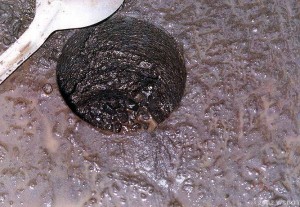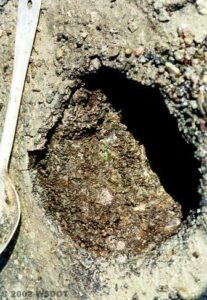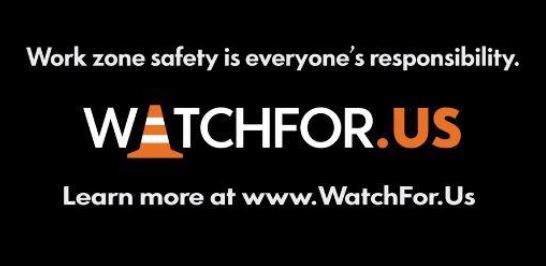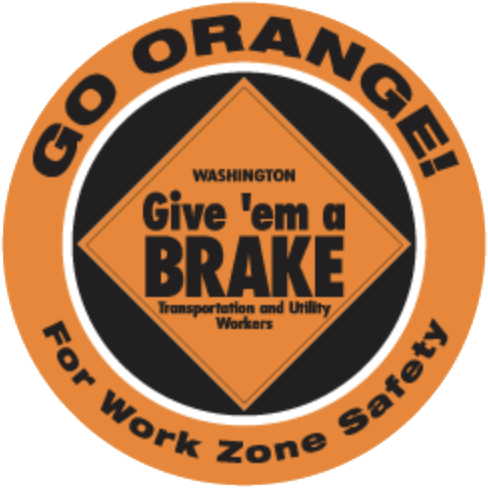Stripping
The loss of bond between aggregates and asphalt binder that typically begins within a HMA layer and manifests as potholes on the surface. Sometimes people refer to raveling as stripping, but they are two different functions. Raveling is where the asphalt is worn off the surface of the pavement – typically via snow plows, chains or studded tires. If the asphalt/aggregate bond is not strong, this wear can be caused by any traffic.

A small pavement core showing stripping at the bottom of the pavement section.
A small pavement core showing stripping at the bottom of the pavement section.


This is what stripping can look like on the surface, but it typically begins within the pavement structure.

Raveling on the surface of the pavement looks like this.
Problem
Decreased structural support, rutting, shoving/corrugations, raveling, or cracking (fatigue and longitudinal)
Possible Causes
Bottom-up stripping is very difficult to recognize because it manifests itself on the pavement surface as other forms of distress including rutting, shoving/corrugations, raveling, or cracking. Typically, a core must be taken to positively identify stripping as a pavement distress.
- Poor aggregate surface chemistry
- Water in the HMA causing moisture damage
Repair
A stripped pavement should be investigated to determine the root cause of failure (i.e., how did the moisture get in?). Generally, the stripped pavement needs to be removed and replaced after correction of any subsurface drainage issues.
Surface Distresses



